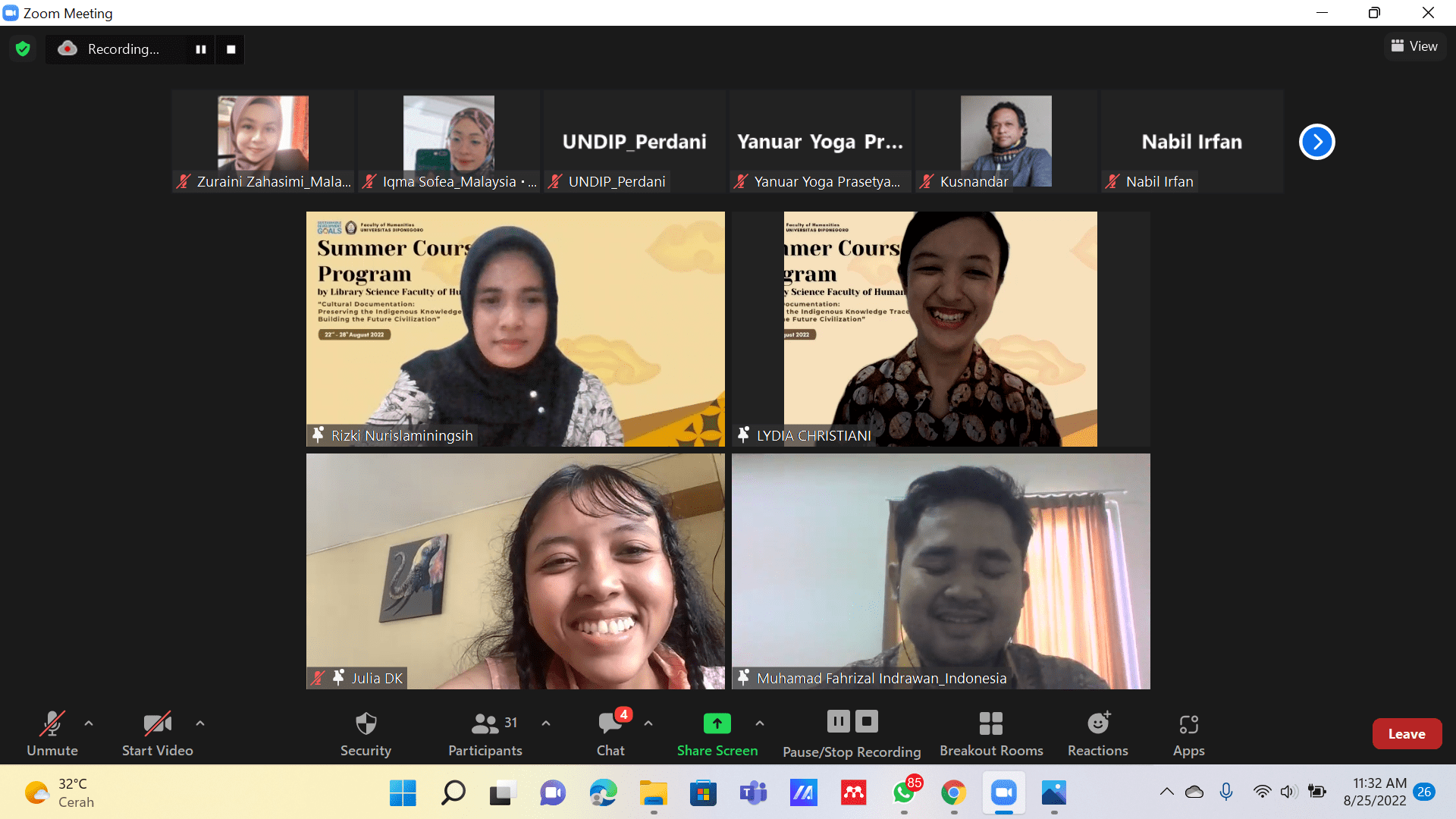The events of the Library Science Summer Course have entered its fourth day. Before the event started, the participants were presented with playing traditional Indonesian traditional songs and a light game called who’s the third person, guided by the MC.
There were two sessions for this event. Mr. Kusnandar, S.Sos., M.Sc., spoke at the first session, while Nur’aini Perdani S.P., M.A. served as the moderator. The rationale behind batik patterns was a topic discussed by speakers in this session. A movie about the origins and development of Indonesian batik is shown to introduce this material. It is also mentioned in this movie that the Government of Indonesia has declared October 2 to be Batik Day in honor of the day when UNESCO designated Batik as a Humanitarian Heritage for Oral and Intangible Culture on October 2, 2009 ago
Following the playback of the video, the speaker discussed the meaning of batik, the various ornamental variations that can be found in batik (covering the geographic location of the batik maker, nature, flora and fauna, etc.), two ways to make batik (including hand-written batik and stamped batik), and various examples of batik motifs based on regions and patterns.
Ms. Rizki Nurislaminingsih, M.A., and Mrs. Lydia Christiani, S. Hum., M. Hum. completed the second session as speakers. The lecturer in this session discussed Batik Laweyan. A video about Kampoeng Batik Laweyan is displayed prior to the content. The video explains what batik is, the equipment and supplies needed to make it (such as mori cloth, Malam, pots and stoves, canting, dyes, handrails, hot water mixed with gasoline, and cold water), as well as the process (such as creating motifs, applying wax, coloring motifs, drying colors, giving waterglass, drying waterglass, dissolving wax, washing, and drying).
After the presentation of the Kampoeng Batik Laweyan video, another video about Songket Fabrics and Lampung Special Lapis was shown.
Next, Mrs. Lydia Christiani, S. Hum., M. Hum., explains numerous general facts about batik, including its various designs and themes, how it is made, examples from different places, etc.
The fourth day of the 2022 Summer Course series was closed by a challenge given by Ms. Rizki Nurislaminingsih, M.A. to the participants.

